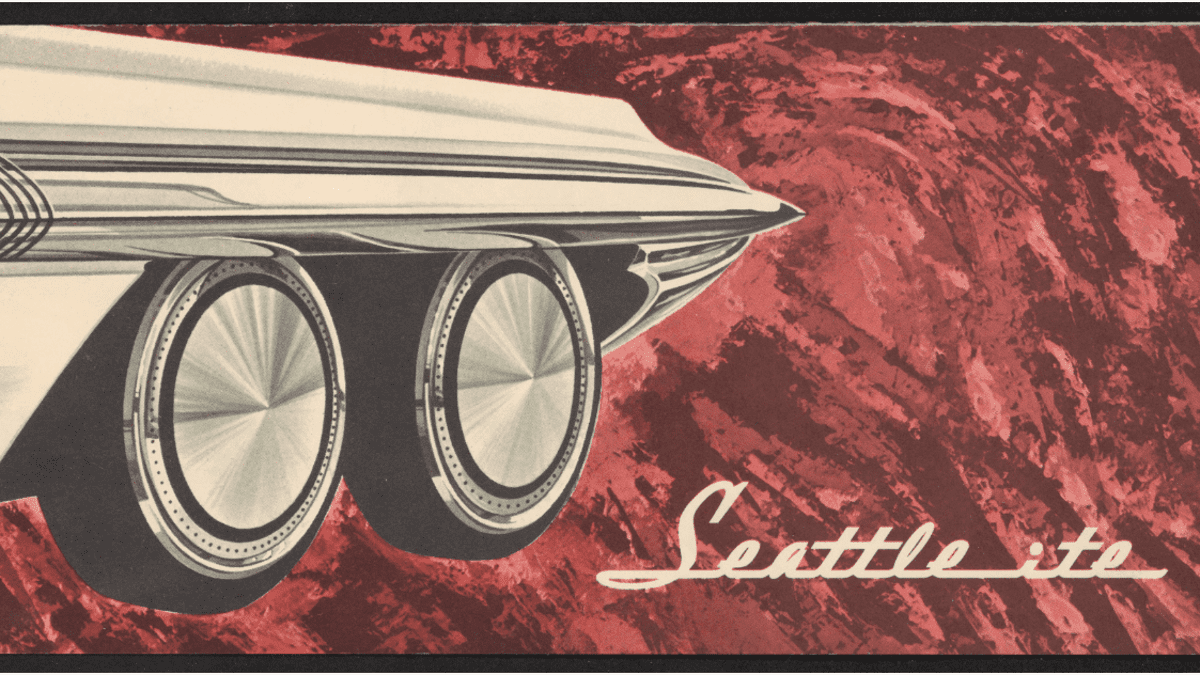Ford's Nuclear-Powered 1962 Concept Car Is a Fascinating Atomic-Age Fantasy

Illustration: Ford Motor Company
The late ’50s and early ’60s gave us some fascinating flights of design fancy in an era of unprecedented American optimism. Ford recent opened its Heritage Vault, full of nearly a century of archived material. It’s a reminder that the auto industry was at the forefront of sci-fi daydreams in the Jet Age. For instance, in just a five-year span, Ford came out with not one, but two nuclear-powered concept cars. Nuclear!
Ford’s first foray into atomic-powered cars was the cab-forward Ford Nucleon. Fans of the Fallout series of video games might recognize this vehicle’s resemblance to the Corvega Atomic V-8, manufactured by Chryslus Motors before the nukes started dropping. In the video game, they make very satisfying targets to blow up when running around the ruins of Boston or D.C.
Illustration: Ford Motor Company
That’s how cool/batshit this design was: its design is still being referenced to this day. The extremely wonderful Max Finkel actually wrote about this concept on Jalopnik back in the day, explaining the fascinating Cold War policies that propelled its design:
Ford’s vision with the Nucleon was essentially to take the premise behind nuclear propulsion as used in submarines and aircraft carriers and adapt it for road use. The benefits of nuclear-powered road vehicles seemed clear at the time. Ending the need for regular fuel stops could be enough, but the prospect of driving the car of the future might have even been more appealing.
Like in an early nuclear submarine, the nuclear reactor would power two steam turbines. One would drive the wheels directly; the second would drive an electric generator to power the lights, climate control and other features.
Interestingly, Ford’s engineers designed the powertrain to be modular. A number of replaceable power-packs were envisioned, including a performance model and an economical version with taller gearing. The power-packs were predicted to provide 5,000 miles of range, which is not enough to last the lifespan of a car but certainly is more time between fill-ups than any internal-combustion or battery-electric car can manage these days by orders of magnitude.
To protect the passengers from, you know, deadly radiation, the small reactor was put in the back of the car, while the passenger compartment was pushed toward the front axle, presumable with a lot of lead shielding. It seems like a pretty risky design, honestly, especially when you consider that road deaths and crashes were just as big of a problem as they are today.
The Nucleon never went beyond the scale-model stage, but that doesn’t mean Ford was done. Instead, the company took a decidedly Space Age track with its next nuclear-powered concept, the Seattle-ite XXI:
Illustration: Ford Motor Company
Ford unveiled this thought experiment in 1962, just four years after the Nucleon. The fins are much more subdued, but there’s still a lot going on with this concept. Ford returned to the notion of having an easily removable fuel cell or nuclear reactor as the power source, but added a totally detachable front end to the design. From 1962 promotional materials:
The entire front end of the Seattle-ite XXI would uncouple from the passenger compartment and an optional power unit could be quickly installed. All controls would be conducted through a flexible coupling that would simply plug into the passenger compartment.
It also would come with what sounds like an early head-up display and an attempt at Level 1 self-driving technology, which Ford called Fingertip Steering:
Fingertip steering and a travel programming computer are among the interior features of the Seattle-ite. Virtually effortless fingertip steering would allow accurate “zeroing in” at all speeds. A viewing screen would show engine performance characteristics, road and weather conditions, positioning of the vehicle on an automatically rolling road map, and estimated time of arrival at any selected designation.
I’m not sure what “zeroing in” at all speeds really means (perhaps a computer that allows lane-keeping), but the rest of that sounds like what Apple CarPlay and Android Automotive do for us today. The cockpit of the car is clearly inspired by fighter jets and spacecraft of the era as well:
Illustration: Ford Motor Company
The last page of the promotional material really says it all. Sure, these ideas seem pretty far-fetched, but we’re just having fun imaging what the future might be like:
Illustration: Ford Motor Company
Thought experiments like this rarely saw the light of day, but they kept things interesting for Big Three designers and engineers, and they’re fascinating to consider in hindsight.



